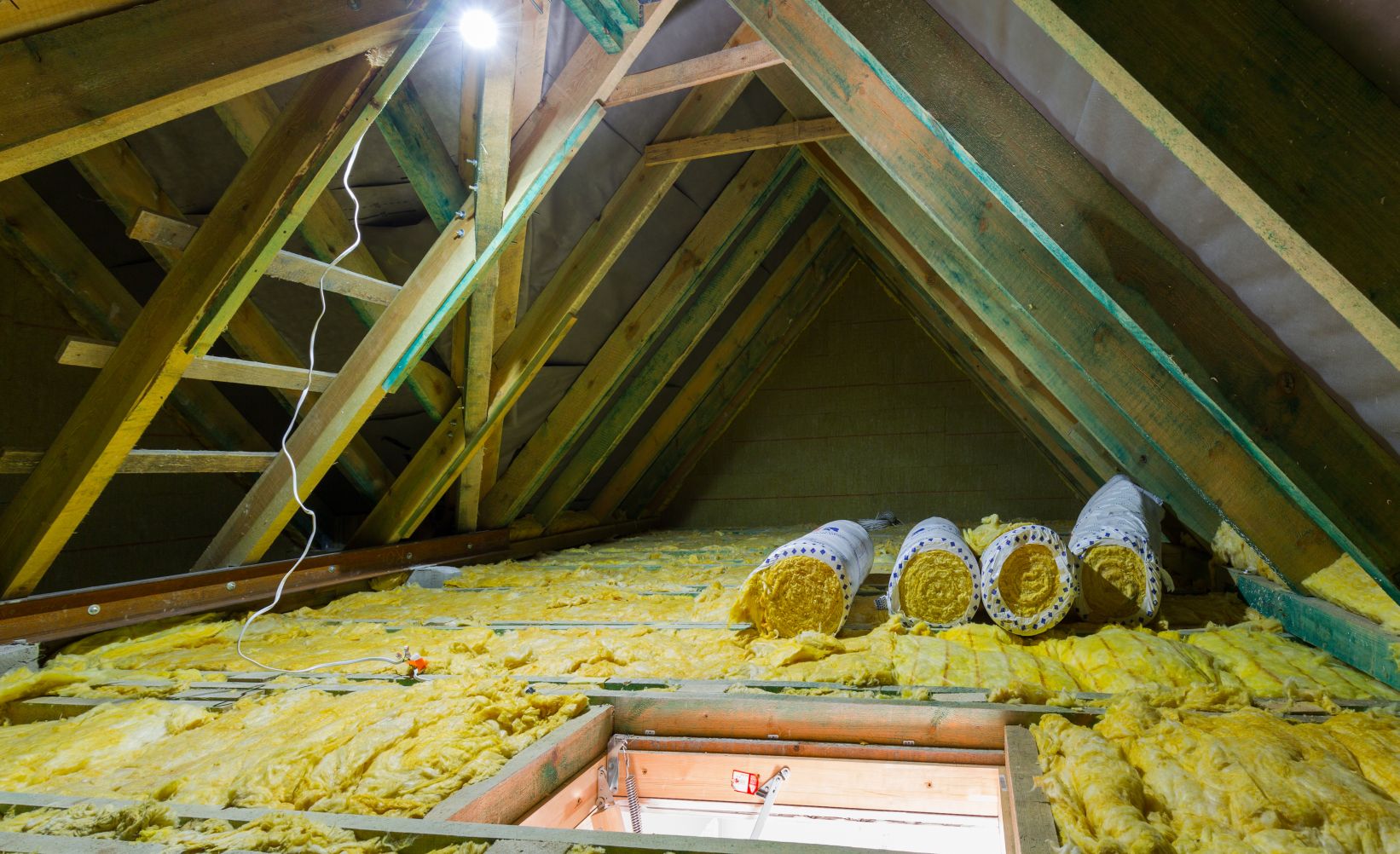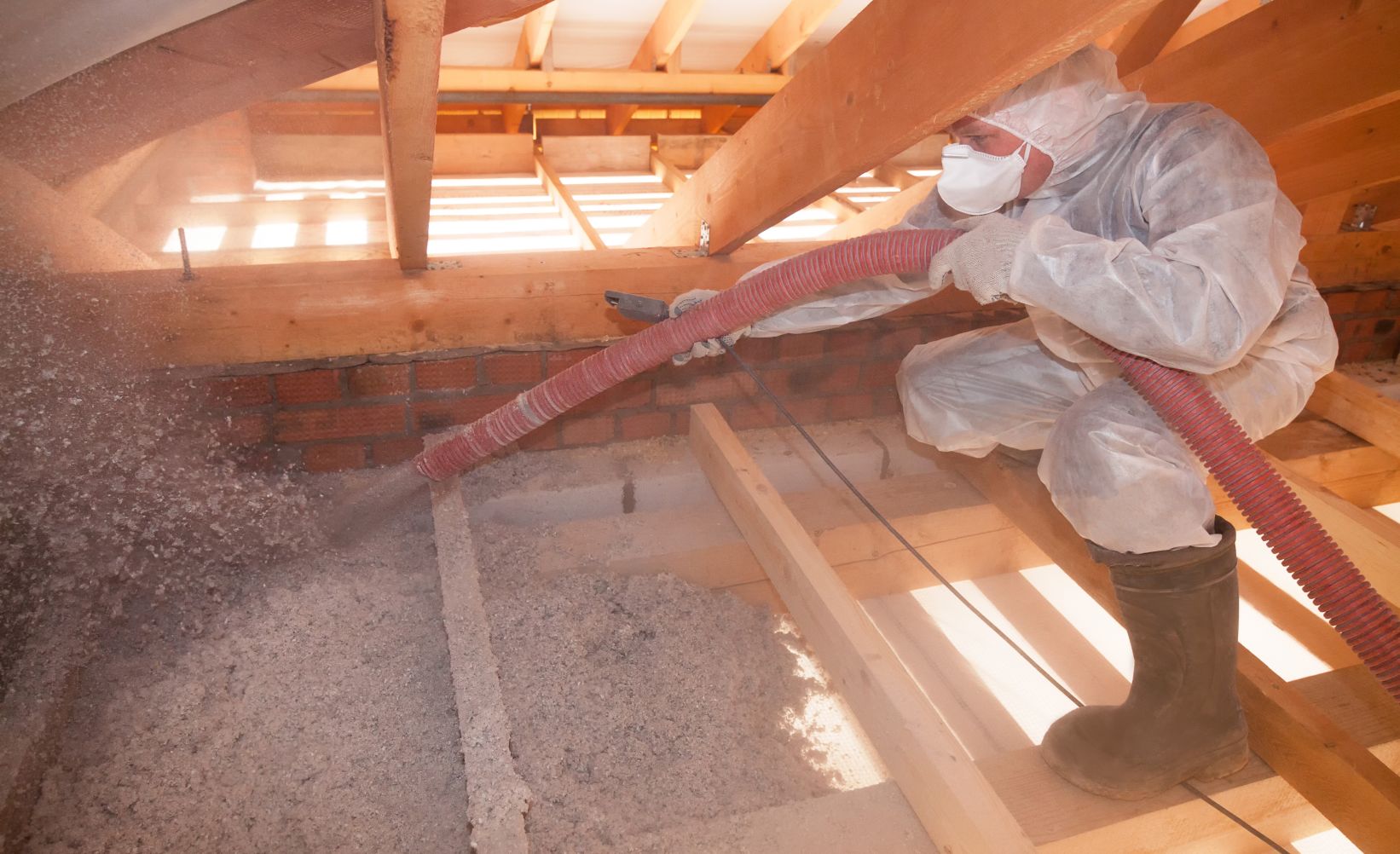How To Insulate Your Loft In 7 Easy Steps
The loft is an area that has so much potential in any property. Depending on how the building was designed and constructed, it can be used in a number of ways - the most common of which is as storage space. This is often down to low ceilings that stop people from standing upright in all but the centre. Despite this, the loft needs to be insulated to stop heat escaping through the ceiling.
A properly insulated loft will help with energy conservation, thus lowering heating bills during the colder months, and mean that, should you decide to make it a usable room in your home, it is enjoyable to be in. It might sound like a big project, and it is, but it can be done in seven simple seps.
Before Insulating Your Loft
Before starting any work on insulating your loft, there are some things to consider first. You need to decide what insulation material you need - and this might depend on what’s already present as well as your budget.
Knowing how much time the project will take is also a consideration, as is what you want to use the loft for in the future.
Choosing Your Insulation Material

There are plenty of insulation materials to choose from, and your home will already have some installed. Even the loft will most likely have some insulation installed, but it might not be as much as you want or need.
To get the right R number, the value that determines thermal efficiency, you need to know what’s available and what you should look for.
Fibreglass insulation, for example, is a popular choice as it’s a very effective, low cost solution to meeting building regulations. It can be used as batts rolls or loose-fill, but needs a vapour barrier to stop excess moisture causing damp and rot.
Rockwool insulation is denser and slightly more expensive, but brings better fire resistance and soundproofing benefits. Depending on what you plan to use the loft for, it could be a better option.
There are other options, too, such as polystyrene, cellulose and more that might be suitable, too, depending on budgets and requirements.
How Long Will It Take To Insulate The Loft?
Depending on the size and shape of your loft, it could be relatively simple to insulate. A domestic house with easy to fill gaps and no odd spaces could be done in as little as a day.
Factors include floorboards, wall panels, existing insulation, chosen insulation and the amount of people involved all play a part, so take care to plan carefully what you need and how long it might take to complete.
Thinking About The Future
This also ties into what the loft will be used for. If it’s just for storage, you may have to look at using upstands. The most important thing is to have the correct amount of insulation, therefore cutting both the carbon emissions of your property and your energy costs. If you plan to convert it into a full room, then there will be other work involved, too, and that might alter what insulation you choose to install - after all, you want as much usable space as possible once the work is done to enjoy.
How to Insulate Your Loft

Once you’ve chosen your insulation, and know what you want to use the loft for, it’s time to get started insulating your loft. Even with these decisions made, there’s a bit more preparation to do first, such as making sure you have the tools and materials you need to complete the project as quickly and efficiently as possible.
What You Need To Insulate Your Loft
Before starting any work, make sure you have the tools and equipment needed for everything. This will save you time by making sure everything is close to hand rather than having to stop and search for something halfway through the work.
The worst thing to happen is to discover you’re missing something and aren’t in a position to get it without waiting. This slows down the work and can impact anything that comes after installing the insulation, so a bit of time here will help.
To insulate your loft, you’ll need:
- Cutting tools
- Gloves
- Hard hat
- Mask
- Safety goggles/glasses
- Screwdriver (manual or electric)
- Tape measure
Optional:
- Loose fill blower
Step 1: Clear The Loft
In many properties, the loft is mainly used for storing things that don’t fit in other parts of the property - or things that aren’t needed often throughout the year. As useful as this is, it will have to be empty for any work to be done. The same is true if it is already in use as a room of any kind.
- Clear any boxes, remove furniture and any other belongings
- Remove the floorboards (if there are any), but leave enough to move around the loft as needed
- Use loose panels that can be moved as needed will be useful for this.
Step 2: Look For Leaks And Holes
The purpose of insulating the loft is to help with heat loss through the ceiling of the property and manage temperatures throughout the year. This matters whether it’s used for storage or any other purpose. Any leaks or holes will reduce the effect of any insulation, so they need to be addressed first.
- Check for any pipes and wiring in the loft
- Fill in big gaps around them in the holes with foam and sealant
- Check around vents and loft windows for gaps
- Fill these gaps with foam and sealant as needed
- Search for leaks by looking for damp or wet areas
- Fix these before laying any insulation.
Step 3: Keep Electrical Fixtures Clear
You should keep insulation from coming into contact with electrical points where possible. While some materials are more susceptible to damage than others, it’s better to be safe and box off small areas to reduce the risk of any accidents taking place. Long periods of use will generate heat, for example, and some materials are at greater risk to fire than others.
- Box off each electrical feature with small pieces of plywood
- Leave around 3-inches of space around the fixture on all sides.
Step 4: Check Any Installed Insulation
Before installing new insulation, you need to know what’s currently in place - if anything. In some cases, you’ll be replacing all the insulation currently installed, while others will be replacing parts and adding another layer to improve the R number. This means you need to know what’s there to work out what level of insulation you already have.
- Check any existing insulation
- Identify the type of insulation material to work out the current R number
- Look for damage, such as rot or damp, and determine whether it needs to be replaced or added to
- Measure the gap between joists
- Measure the depth of the joists
- Measure how much insulation is in place (if any is being kept).
You can install insulation higher than the joists of your loft, but this will need to be taken into account in your measurements - and alter the flooring you’ll put down once the work is done.
Step 5: How To Install Batts Insulation
Batts insulation is one of the easier ways to insulate your loft. These roles are available in different sizes, thicknesses and materials, so you can find the right one for your needs. It might need trimming down depending on the gap you have to fill, but this is an easier task than it sounds - and they can come with a vapour barrier, too.
- Double check to make sure the rolls are the right size
- Trim down any excess as needed
- Start in the far corner and lay the insulation
- Unroll back towards the hatch or loft entrance
- Cut the roll where crossbeams appear and start again on the other side
- At the end of each row, cut the insulation and move to the next row
- Repeat for all spaces between the joists
- To meet modern building regulations, most domestic dwellings require an extra layer running perpendicular on top, too
- For any small or oddly-shaped spaces, cut the remaining rolls to get the right pieces.
Step 6: Installing Loose-Fill Insulation
Loose-fill insulation is another option, and can be done by hand or with a blower. We recommend a blower for even coverage across the loft - and it’s also an easier, more efficient way to install it. Whether you decide to use it as a top-up layer or there are too many odd gaps that make up the loft, it can be easier than batts in some cases, however it should be installed by recommended fitters.
- They will install a vapour barrier between the hard surface and where the insulation will go
- Starting in the far corner, they will work their way back towards the entrance of hatch
- If installing the insulation by hand, they will make sure it’s as even as possible
- Some loose-fill insulation will flatten over time and need more added once it has settled
- While measurements are not needed for this, fitters will make sure the spread of insulation is as even as possible.
Step 7: Cleaning Up And Getting Ready For Use
Once the insulation has been installed, it’s time to clean up and get the space ready for use again - whether that’s as storage or for another use. Until everything has been tidied and covered, wearing a mask is advisable as insulation can be harmful if inhaled - even the tiniest pieces.
- Clear up loose pieces of insulation, or cut away any odd parts that don’t fit
- Attach the fitted raised flooring/storage area panels
- Attach any walls (if needed for use as a full room)
- Return any boxes, belongings and furniture to the newly insulated loft.
Want To Know More About Insulating The Loft?
Insulating the loft is normally done during the construction of a property, but the materials don’t last forever. Even if there’s no property damage or leaks over time, extreme weather can change moisture levels in the air, so regular checks are advised to be sure you’re not losing heat at the worst times of the year.
If there are specific plans for the loft, then installing new insulation could make it a much more enjoyable part of the property as well as providing benefits for the building overall. Each project is different, but our team at U Value is happy to answer any questions you have to help with the project. For further information please visit: https://www.uvalue.ie/contact or phone: 01 861 2000.

